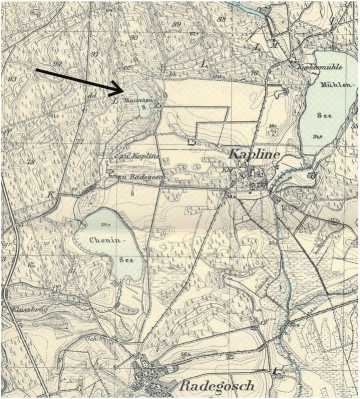2949775499
156 A. Rusińska ...
INTRODUCTION
Peatlands are an important element in the landscape shaped by the last glaciation in Poland. They are most densely distributed in the north-western part of the country, where over 60 peatlands per 100 km2 are found (Jasnowski 1975, Żurek 1987, Tobolski 2002). The oc-currence and ecological uniqueness of some of them, particularly spring fens, have not been thoroughly inves-tigated to datę. It is estimated that the total proportion of biotopes of this type accounts for less than 1% of the total area of peatlands in Poland (Jasnowski 1975). The highest concentration of fen vegetation localities were documented in eastern Poland (e.g. Oświt 1991, Żurek 1993, Łachacz 2000, Pawlikowski 2006). Genesis and development of spring water ecosystems are dependent on the constant inflow of underground waters rich in soluble calcium compounds (e.g. Wołejko 2001, Hajek et al. 2002, 2006). Due to their rare occurrence, well-preserved natural character and the accumulation of threatened, protected and relic species, spring fens are objects with the highest protection priority in the Eu-ropean Union (the Corine List) and species protected within the framework of Natura 2000.
Peatlands and particularly fens are very rare ecosystems in the lakę district landscape of the Wielkopolska-Kujawy Region. In the central and Southern part of this region the density of open Sphagnum lawns is estimated at 5-10 per 100 km2 (Żurek 1987). An exception in this respect constitutes the north-western Wielkopolska region, particularly the Gorzów Basin. The estimated density of mirę ecosystems in that mesoregion is 10-25 per 100 km2 (Żurek 1987). They are found in biggest numbers in the Puszcza Notecka and together with the aąuatic ecosystems they contribute to an enhancement of biodiversity in the coniferous forest landscape. Peatlands of that area fili the interdune wind-blown troughs, including also shore zones of interdune lakes and less freąuently they are connected with watercourses. The woodless peatlands of the Puszcza Notecka, which are biggest in terms of their area, are known and thoroughly investigated. Examples of such ecosystems include the Chlebowo bogs complex (the so-called Bagno Chlebo-wo) with an area of almost 1284 ha (including 50 ha of Sphagnum lawns, e.g. Czubiński and Świtalska 1937, Rusińska and Bocheński 1993, Celka and Szkudlarz 2000, Szkudlarz and Celka 2004), the fens at Lakę Rzecińskie near Wronki of almost 30 ha (e.g. Woj-terska et al. 2001, Gąbka 2005) and the peatlands

Fig. 1. Lakę Makąty (Maconten See) on a map of 1893
Wyszukiwarka
Podobne podstrony:
decorattve borders Borders are an importa/U part in complefing a (/nilling project. They can be used
for fairly uniform clay deposits. Sensitivity, it was agreed, plays an important part in the reducti
3 AN UNPUBLISHED DOCUMENT AB OUT THE GREEK REYOLUTTON 723 Another important element for the ide
00280 ?50e49716bf91ec4f5cc241ba142d24 282 Montgomery & Runger Statistica! Inference in tbe Rand
314 JERZY MICHALCZYK Negotiating Power as an Important Issue in Negotiations Summary The author of t
Selyedges Perfect edges are an imporiant pan in knitting. They make it easier to sew the k
004 Introduction faitroduetion As eveiy busy teacher knows, reproducible patterns can be an invaluab
72010 P1130033 1.3.2,5 Twin pregnancy An important indication for the use of ultrasonogra-phy is the
CAUTION AGAINST THE USE OF UTERARY SOURCES .... 149 Avad&na is the theme of an important paintin
46445490 2 decorative border, Bortfers ore an Importan! /tar/ in compleibtg a
więcej podobnych podstron